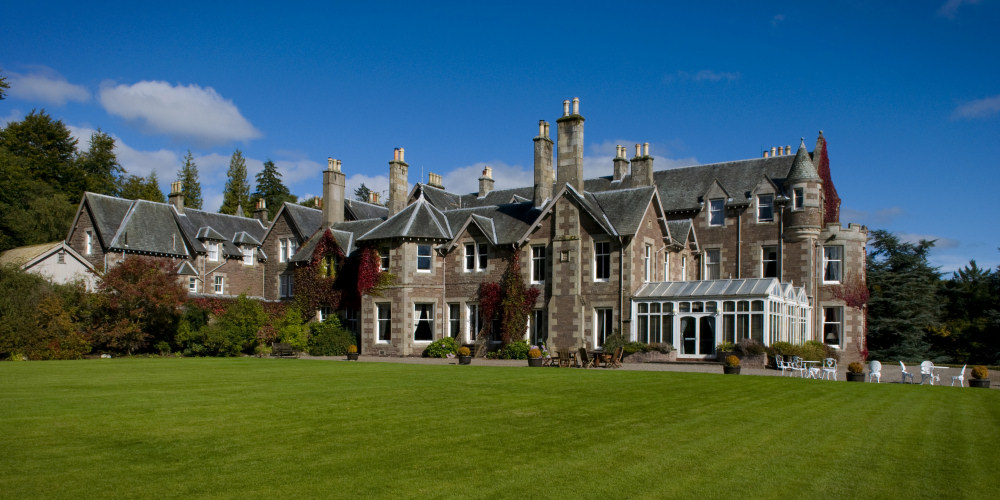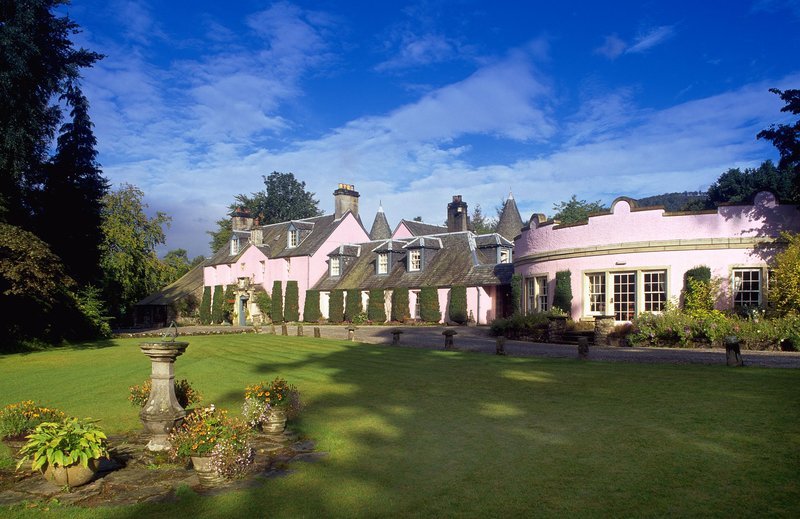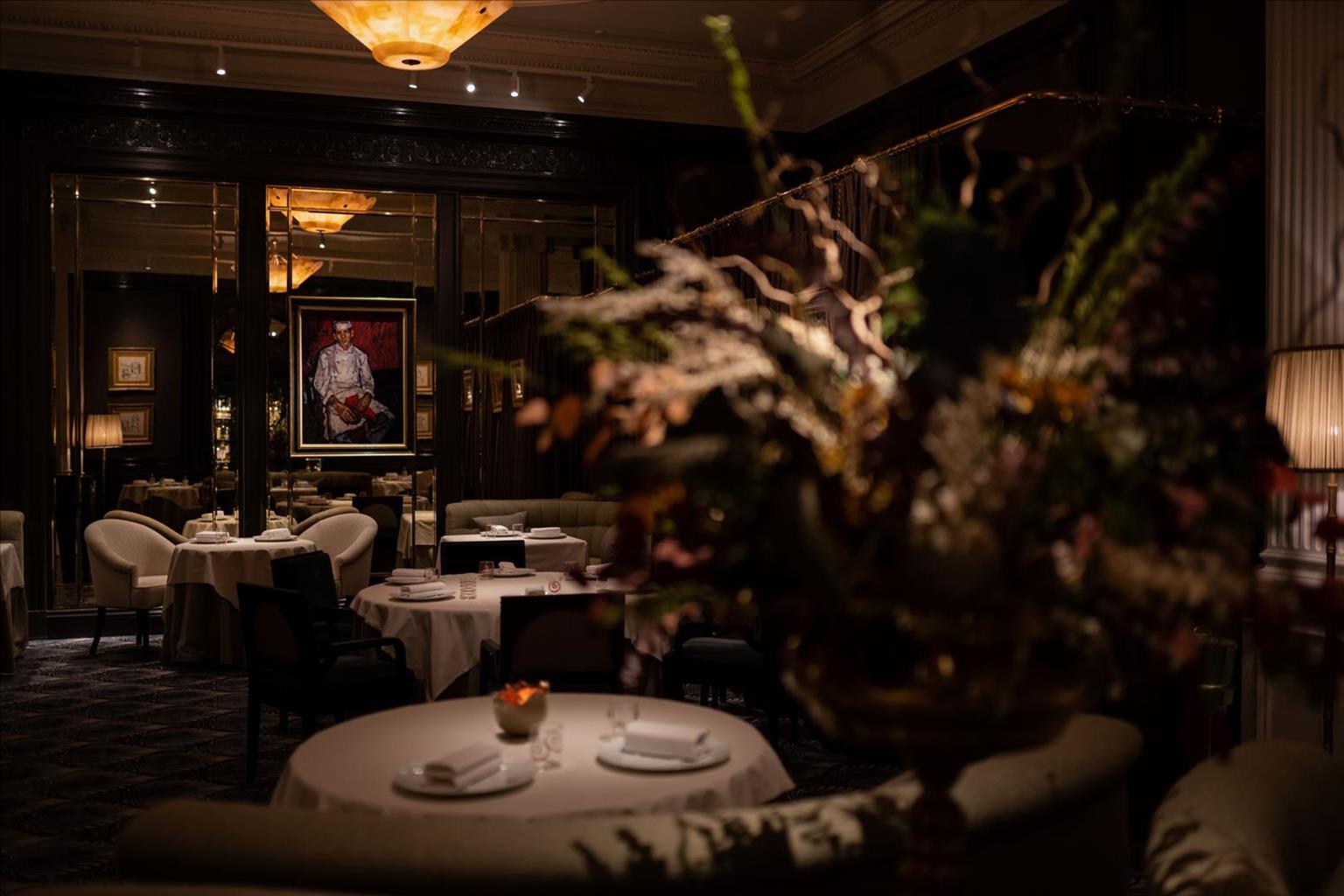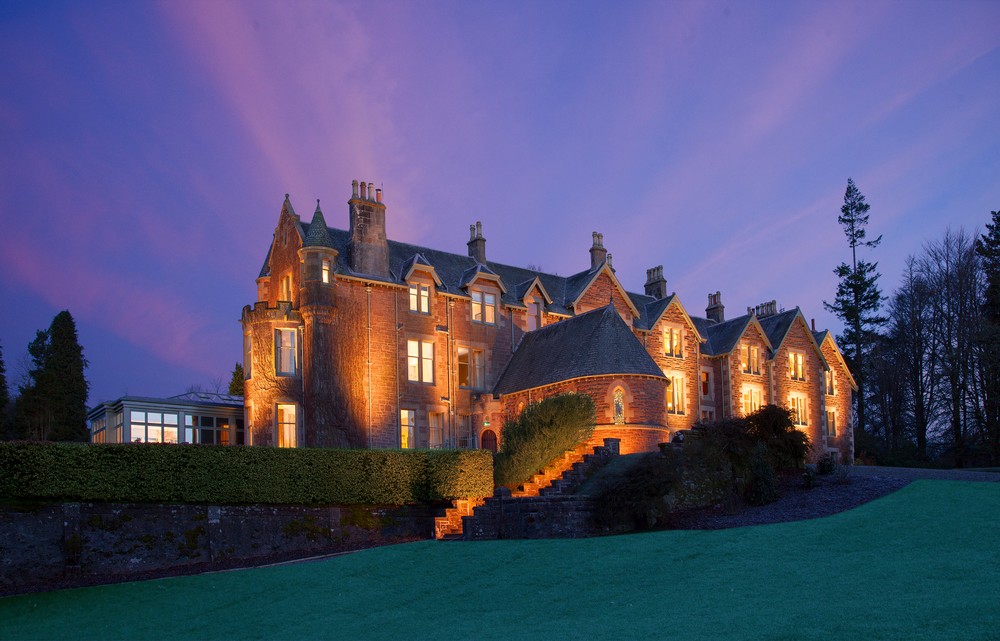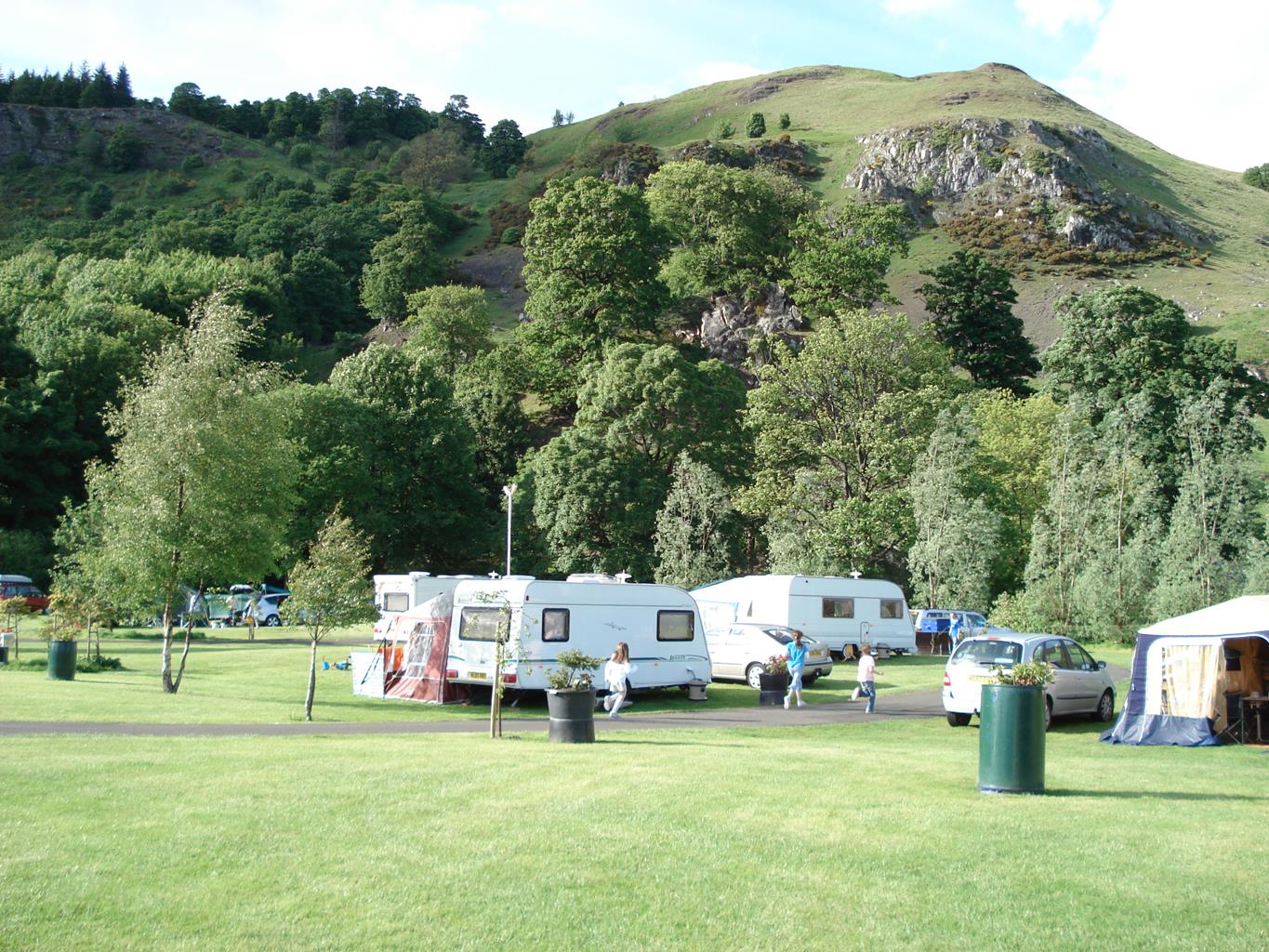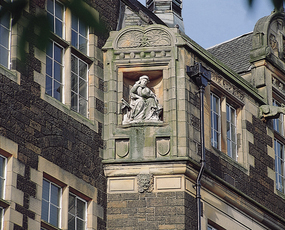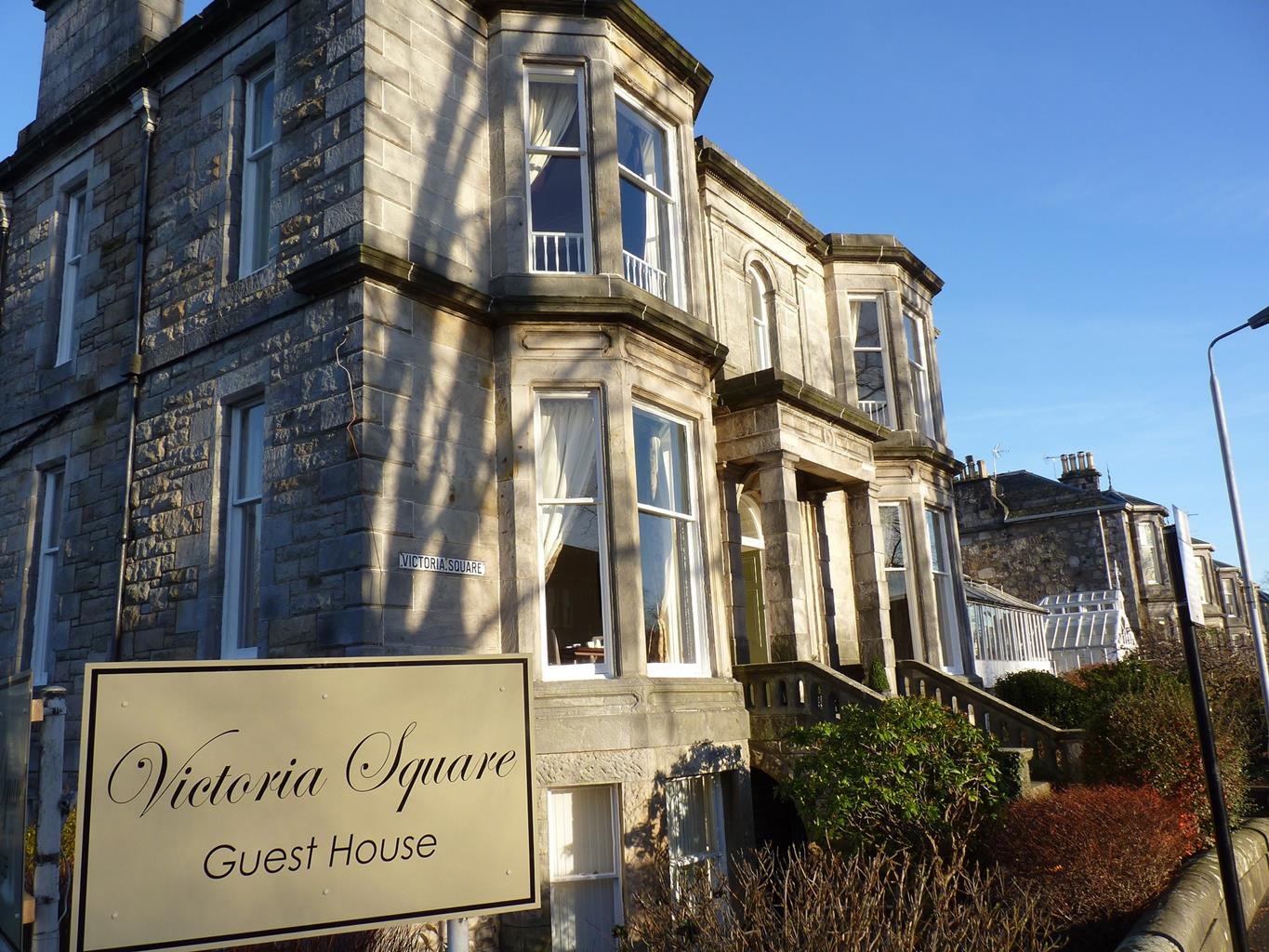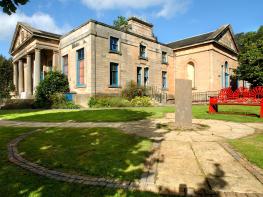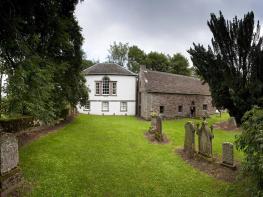Owned by tennis star Sir Andy Murray, who was born in nearby Dunblane, this stunning hotel has…
From Dunblane to Bridge of Allan

5.25 miles (8.4kms)
About the walk
Though it’s a small and tranquil place today, Dunblane during the middle ages was much more important. Its rather splendid cathedral was founded in the 12th century, and hugely expanded by Bishop Clement during the first half of the 13th. The interior became ever more opulent – but in the 16th century the fervour of the Protest Reformation swept away most of its grandeur. The part-ruined church was extensively restored in the late 19th and early 20th centuries, with embellishments including windows created by C E Kempe, one of the finest Victorian stained-glass artists.
Robert Louis Stevenson, author of the adventures Treasure Island and Kidnapped, and many other works, spent childhood holidays here. A cave, passed on this walk, is said to have inspired the cave of the castaway Ben Gunn in Treasure Island, and the Allan Water, which flows through the town, is mentioned in Kidnapped.
Taking the waters
This easy walk takes you from Dunblane to Bridge of Allan, following an ancient track beside the Alan Water known as the Darn Road. It gets its name from the old Gaelic ‘Dobhran’ or Water Road. Bridge of Allan was once a spa town renowned for the supposedly therapeutic properties of its mineral springs. Grand buildings were created to accommodate and entertain the wealthy visitors who came to ‘take a cure’, which involved downing half a gallon (2.3 litres) of health-giving water each morning.
In the other direction, Doune was noted for the skills of its gunsmiths, who supplied Highland clansmen (such as the norious Rob Roy MacGregor) with the silver-mounted pistols they favoured.
A drawn match
Not far away is Sheriffmuir, site of a battle between Hanoverian and Jacobite forces during the rising of 1715. Although the Earl of Mar’s Jacobites outnumbered the government army three to one, the battle was inconclusive, the rising fizzled out, and the ‘Old Pretender’ (son of James VII and II, the last Stuart king of England and Scotland) fled for France. A popular ballad mocked both sides:
There’s some say that we wan
An’ some say that they wan
An’ some say that nane wan at a’, man
But o’ae thing I’m sure
That at Sheriffmuir
A battle there was, that I saw, man.
Walk directions
From the station, walk past the Dunblane Hotel to go over the bridge, then turn left down Mill Row. Follow the wide track beside the Allan Water. Pass a bridge on the left-hand side, and continue ahead under a railway bridge. Follow the path to another bridge, where you cross a small burn and take the path that bears right, passing a children's play area. Follow this path uphill to reach a railway cutting. Soon reach some steps on the right-hand side, which lead down to a bridge and across the railway. The route continues ahead, leading over rough ground that in summer is ablaze with pink rosebay willowherb and golden ragwort. Follow the main track to a fingerpost, signed 'Ashfield 1'.
Turn right here, following the edge of the burn to reach a crossing of tracks. Turn right and cross the burn, following the track as it now swings up to the road. At the road turn right. Pass some attractive old weaver's cottages, reminders of the weaving industry that was once so important to this area. Follow the road as it bears to the left and walk straight down to reach Dunblane Cathedral.
After visiting the cathedral, continue down to a roundabout to join the High Street, and walk up to the Stirling Arms Hotel. Walk ahead, keeping the hotel on your right, and go uphill to reach the main road.
Cross the dual carriageway with care, then take the track almost opposite, next to the bus stop, signed 'Bridge of Allan 2.5'. You're now on the Darn Road. It's a clear track and easy to follow. Pass the clubhouse of a golf course on the left-hand side and go through a wooden gate into woodland. Eventually come to a footbridge over the Wharry Burn, and then a signpost where you follow signs for Bridge of Allan.
You'll now see the river on your right-hand side. Ignore the footbridge on the right and continue ahead through woodland. Soon reach a cave on the left, said to be the inspiration for Ben Gunn's cave in Treasure Island (1883). After this you'll come to some steps, which take you higher above the water.
Follow the path downhill and over a footbridge with green railings. Continue to follow the track as it goes beside pastures and then houses, before eventually meeting the main road. Turn right and follow this into Bridge of Allan. Turn left and walk along Henderson Street, the bustling main street which is lined with shops and eating places. At Fountain Road turn right. Pass Holy Trinity Church on the right-hand side, noted for its associations with Charles Rennie Mackintosh.
Walk down beyond the fountain, past a roundabout, then turn right along Allanvale Road – almost doubling back on yourself. Pass some unusual cottages on the right-hand side. Follow this road as it bears round to the right, becoming Union Street, and back on to Henderson Street. Now turn left and walk ahead to cross over the bridge. Turn left down Inverallan Road and bear right to the station to catch the train back to Dunblane.
Additional information
Firm tracks and pavements throughout
Quiet riverbanks and small towns, plus grand cathedral
Good, can run free for much of walk
OS Explorer 366 Stirling & Ochil Hills West
By station in Dunblane
Near station in Dunblane
<p>Note: This is a linear route, with a train link to return you to your start point; check timetables ahead.</p>
WALKING IN SAFETY
Read our tips to look after yourself and the environment when following this walk.
Find out more
Also in the area
About the area
Discover Dumfries & Galloway
Dumfries and Galloway is a wonderfully undiscovered corner of Scotland – a romantic land of wooded glens, high hills and exposed moorland, haunted by its colourful past and the ghosts of those who fell in fierce and bloody battles. Heading west from Gretna Green you soon reach Dumfries, straddling the River Nith, where you may see red-breasted mergansers in summer.
The market town has strong associations with one of Scotland’s most famous sons, Robert Burns, who farmed nearby and returned to Dumfries towards the end of his life. You’ll find Burns-related visitor attractions around town, plus a portfolio of other sights ranging from ruined castles and abbeys to quirky museums. You can see for miles from the Camera Obscura, which occupies the top floor of the 18th-century windmill.
To the north lies a vast and endless landscape; mile upon mile of open moorland and afforested slopes stretching towards the Ayrshire coast. On the long haul to Stanraer, you’ll want to make regular stops and visit places like Gatehouse of Fleet, a delightful 18th-century planned town, and Creetown, a planned village on the estuary on the River Cree. Perfect for walking and fishing, Dumfries and Galloway seems gloriously untouched by 20th-century progress.
Nearby stays
Restaurants and Pubs
Nearby experiences
Recommended things to do
Why choose Rated Trips?
Your trusted guide to rated places across the UK
The best coverage
Discover more than 15,000 professionally rated places to stay, eat and visit from across the UK and Ireland.
Quality assured
Choose a place to stay safe in the knowledge that it has been expertly assessed by trained assessors.
Plan your next trip
Search by location or the type of place you're visiting to find your next ideal holiday experience.
Travel inspiration
Read our articles, city guides and recommended things to do for inspiration. We're here to help you explore the UK.

